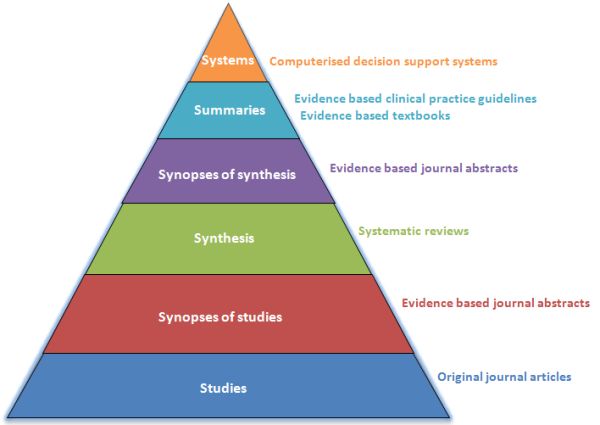
 “Evidence synthesis uses formal explicit rigorous methods to bring together the findings of studies already completed and to provide an account of the totality of what is known from that pre-existing research. Evidence synthesis clarifies what is known and not known about a research question.” Gough, D., Davies, P., Jamtvedt, G. et al. Evidence Synthesis International (ESI): Position Statement. Syst Rev 9, 155 (2020). https://doi.org/10.1186/s13643-020-01415-5
“Evidence synthesis uses formal explicit rigorous methods to bring together the findings of studies already completed and to provide an account of the totality of what is known from that pre-existing research. Evidence synthesis clarifies what is known and not known about a research question.” Gough, D., Davies, P., Jamtvedt, G. et al. Evidence Synthesis International (ESI): Position Statement. Syst Rev 9, 155 (2020). https://doi.org/10.1186/s13643-020-01415-5
Image based on DiCenso A, Bayley L, Haynes RB (2009). Accessing pre-appraised evidence: fine-tuning the 5S model into a 6S model. Evidence-Based Nursing, 12(4),99-101.
This subject guide covers the different types of evidence synthesis review. Follow the links for detail about the methodology, reporting and resources.
This subject guide covers:
This subject guide covers the steps involved in undertaking an evidence synthesis review. Please note that not all steps are required for all types of evidence synthesis review.